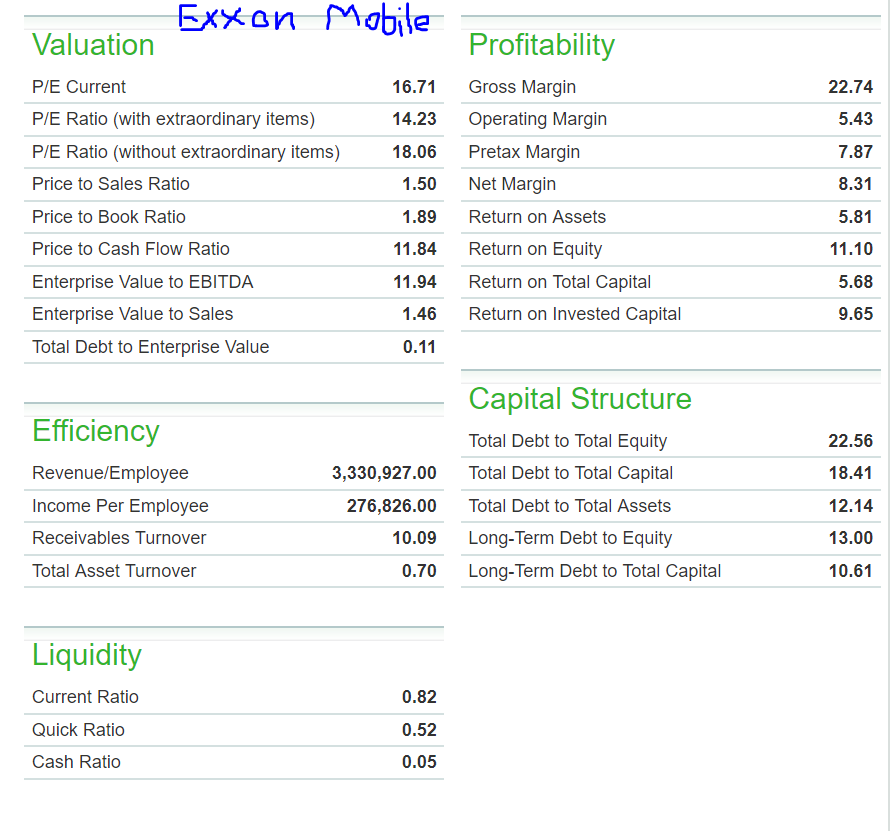Difference between Accounting Profit and Economic Profit
Contents:


This is because companies often incur opportunity cost for activities foregone in favor of other activities. If it declines one opportunity for another, the potential income from the declined opportunity is factored into economic profit but not accounting profit. In other words, accounting profit usually has less expenses, though it is possible for an opportunity cost to be a cost avoidance measurement that results in lower accounting profit. The managers and business owners keep track of their financial performance by preparing monthly, quarterly, and annual income statements. Every time, the final result of an income statement is the most significant figure for them.
In accounting, profit means surplus, i.e. the excess of total revenue over the expenses. On the other hand, in economics, you might have heard the term economic profit, which is nothing but the amount left over after deducting all implicit and explicit costs. Accounting profit is the profit after subtracting explicit costs .
In the example, we see that though the accounting profit was higher, the internal review by the company shows that they could have made better decisions and made more money. Reviewing both accounting profit and economic profit is essential to ensure that companies perform well in strategy as well as in terms of money. The accounting books of a company record all the factors used to calculate the accounting profit.

Market power, or the ability to affect market prices, allows firms to set a price that is higher than the equilibrium price of a competitive market. This allows them to make profits in the short run and in the long run. This situation can occur if the market is dominated by a monopoly , oligopoly , or monopolistic competition .
They can vary depending on management’s estimations and market circumstances. Generally, opportunity cost will be the accounting profit that could have been achieved by making an alternative choice. Economic profit figures can be helpful for business decision-making. The cost of goods sold is the most basic explicit cost used in analyzing per-unit costs. Thus, in the equation above, a company could also break down its opportunity costs by units to arrive at a per-unit economic profit.
Characteristics of Financial Intermediaries
Needless to say, a recognition of the differences between the economist’s and the accountant’s measure of profit is a basic ingredient for any profit analysis. The various concepts and techniques involved in the proper measurement of profits are of value to all groups with an interest in the economic health of the business firm. Lack of competition keeps prices higher than the competitive market equilibrium price. For example, firms can collude and work together to restrict supply to artificially keep prices high. If you simply mean money that you personally set aside for your business and have sitting somewhere in an account until you need it, then no it isn’t an expense – it’s a cash asset. However when you spend that money on things to benefit your business like Plant and Equipment and other expenses, then that money does get factored in as such – money used to finance your expenses.
Then, in this case, the revenue which the firm could not earn as they have not launched new products is known as opportunity costs. Accounting profit focuses on the financial performance of a business, while economic gain considers both financial and opportunity costs. The entire future of any company depends on the profit earning potential shortly and how it has performed in the recent past. As a shareholder/investor, the accounting profit is important as that will give the true picture of the financial performance. Economic profit is the difference between total revenue from a business and total costs the business has to incur. If after the first year, costs decrease to $10,000 then the economic profit outlook would improve for future years.
If you excluded the opportunity costs from this equation, you’d get simply the accounting profit. However, when you subtract the opportunity costs as well, the economic profit results. It can serve as a comparison to other options that could have been undertaken by a company, for better or worse. In order to find the true economic profit, however, the economist also considers any implicit costs involved.
Get a complete picture with accounting and economic profit
Investopedia requires writers to use primary sources to support their work. These include white papers, government data, original reporting, and interviews with industry experts. We also reference original research from other reputable publishers where appropriate. You can learn more about the standards we follow in producing accurate, unbiased content in oureditorial policy. A fixed cost is a cost that does not vary with the level of production or sales.
Non-cash AdjustmentsNon-cash expenses are those expenses recorded in the firm’s income statement for the period under consideration; such costs are not paid or dealt with in cash by the firm. Accounting profit is the net income that a company generates, found at the bottom of its income statement. The figure includes all revenue the company generates and deducts all expenses to arrive at the bottom line.
Alcon: Case Of Growth Destructive To Value, Reiterate Hold At 24x … – Seeking Alpha
Alcon: Case Of Growth Destructive To Value, Reiterate Hold At 24x ….
Posted: Wed, 01 Feb 2023 08:00:00 GMT [source]
The gross Profit is calculated by subtracting the direct costs or cost of goods sold from the revenues. The operating Profit is the difference between the gross Profit and operating expenses incurred by a company during a financial period. It is calculated by subtracting other expenses, interest expenses, and taxes from the company’s operating Profit. The income statement is the statement that reflects the current financial health and growth of the company.
How to calculate accounting vs. economic profit?
Accounting profit is calculated in compliance with the GAAP accounting standards. Accounting profit is normally more than Economic profit since economic profit can involve multiple categories of income and expenses accompanied by relevant assumptions. For a detailed explanation of how to perform the calculation, see CFI’s Ultimate Cash Flow Guide. Economic profit is more of a theoretical calculation based on alternative actions that could have been taken.
Economic profit may be seen as better than accounting profit because it is not restricted by accounting rules. Economic profit reflects all of the decisions of a company, regardless of whether they comply with GAAP or IFRS. Economic profit considers decisions not made or choices foregone, so it is a broader, more encompassing depiction of the positioning of a company.
Calculating and auditing the opportunity cost and economic profit leads to better decision-making. The comparative study and analysis of the accounting and economic profit of the company helps the company continually evolve and stay ahead of the competition. As a business person, one of the most important words that get your attention is ‘profit’. One of the most vital reports extracted from an accounting system or software is the profit and loss account. It tells you if you are making or losing money through your business. The majority of companies are interested in the actual amount of profit that they make.
An examination of these groups and their specific needs for measures of profits arises from their diverse requirements. Our objective here is not to suggest that either the accountant’s or the economist’s view of profits is incorrect. The last assumption is important since we must also assume that if he were not running the filling station, the manager would be employed elsewhere. What i am trying to say is that this types of cost does not really affect us in the real life, i mean it could but most of the times they affects us in theory. She has held multiple finance and banking classes for business schools and communities. It also shows the financial performance of the company in a financial year.
Economic Profit (or Loss): Definition, Formula, and Example – Investopedia
Economic Profit (or Loss): Definition, Formula, and Example.
Posted: Tue, 27 Dec 2022 08:00:00 GMT [source]
Accounting profit is a company’s total earnings, calculated according to generally accepted accounting principles . There are no certain rules like GAAP or IFRS for calculating the economic Profit. However, the economic Profit is calculated by making adjustments in the accounting profit. Therefore, it can be said that the IFRS and GAAP provide the guidelines for the calculation of the economic Profit of any business entity for a given period. The accounting profit is generally larger than the economic profit as economic profit is determined using multiple assumptions along with the re-use of multiple categories of income and expenses. If there is freedom of entry in an industry, it is quite unlikely that economic profits will persist indefinitely.
What Is Accounting Profit?
Using the formula above, we can determine that the economic profit of producing these toys is $3,000 ($10,000 – $5,000 – $2,000). The $2,000 is included as an implicit cost that is otherwise not recorded on the financial statements. Economic profits are defined as the net profits earned by the firm after reducing both explicit and implicit costs, like opportunity costs, from the total revenue earned by the company. Economic profit represents a company’s revenue less its explicit costs as well as its opportunity costs.
Accounting Cost vs. Economic Cost: How (& When) to Use Each – The Motley Fool
Accounting Cost vs. Economic Cost: How (& When) to Use Each.
Posted: Fri, 05 Aug 2022 07:00:00 GMT [source]
The analysis of the three will help in knowing about the company’s performance, profitability, future, financial stability and position as well. This would suggest, the stakeholders, whether to invest in the company or not. When we talk about business, there is the least amount of profit required for its survival, which is known as normal profit. In short different disciplines defines profit differently, which one must know while working on profits.
Main Differences Between Accounting and Economic Profit
It includes rent, labour charges, administrative costs, bills, etc. Accounting profit can be referred to as the revenue obtained post-meeting all economic costs, and Economic profit is obtained when revenue exceeds the opportunity cost. In a general sense, profit refers to the surplus which remains out of the total income after deducting the necessary expenses. Operating income is a company’s profit after deducting operating expenses such as wages, depreciation, and cost of goods sold. Accounting profit, as earlier discussed, is one of the most-watched financial measures of any company. The accounting profit does not have implications for the managers of the company only.
May be used for internal analysis or by specific individuals to assess the opportunity costs that make way for current activities. Though economic profits can involve a lot of assumptions, they can give an approximate answer to the desired direction. Every for-profit business entity has the primary purpose of earning Profit through different business operations. The company’s Profit or loss, net income, is reported in the financial statements at the end of a financial year. Besides the net income, some different financial metrics and measures help assess a business entity’s financial health and profitability. The accounting profit on the bottom line of the income statement is the net income after subtracting for direct, indirect, and capital costs.
Accounting profit is a company’s net earnings on its income statement, whereas economic profit is the value of cash flow that’s generated above all other opportunity costs. This guide will help you thoroughly understand accounting profit vs economic profit, and while they may sound similar, they are actually quite different. The accounting profit can be described as the profit that is earned and reported on the income statement. The economic profit is defined as the profit that the business derives over and above the opportunity costs. The accounting profit can be found at the bottom line of income statement whereas economic profit has to be determined by determining the free cashflows.
- Economic profit considers decisions not made or choices foregone, so it is a broader, more encompassing depiction of the positioning of a company.
- The implicit cost is what the firm must give up in order to use its resources; in other words, an implicit cost is any cost that results from using an asset instead of renting, selling, or lending it.
- Accounting profit is the difference between total revenue and explicit costs only.
- The economist also defines profit as the excess of total revenue over total cost.
- Opportunity costs are always non-negative, and economic profit is accounting profit minus opportunity costs.
It is more difficult to calculate the opportunity cost and economic profit than accounting profit, but they are all very important. As Sal says, suppose you were a doctor making $150K and gave that up to run the restaurant business. That salary given up is not counted in determining the accounting profit but is included in the economic profit calculation.
Economic profit is a form of profit that is derived from producing goods and services while factoring in the alternative uses of a company’s resources. It deducts explicit costs from revenue and includes the opportunity costs incurred during that period of time. Implicit costs, which are typically the costs of a company’s resources, are also part of the equation. The accounting profit can be defined as the profit that the business earns as per the book of accounts of the business. The accounting profit is determined as the difference of total sales generated by the business and the costs incurred by the business that could be accounted explicitly. The explicit costs may comprise of cost of goods sold, operational expenses and non-cash expense.
- Market power, or the ability to affect market prices, allows firms to set a price that is higher than the equilibrium price of a competitive market.
- The implicit costs are generally regarded to the opportunity costs that the business has to bear for foregoing an opportunity by selecting an alternative through the course of business.
- Profit is used as a yardstick for measuring the validity of past decisions and in evaluating the potential of future decisions.
- The economic profit is used by the economists to measure the financial position of the company.
- In competitive markets, where there are many firms and no single firm can affect the price of a good or service, economic profit can differ in the short-run and in the long-run.
These costs consist of actual payments of cash or of bookkeeping entries for the expenses accounts, such as wages, materials and capital consumption . On the contrary, if a firm’s manager is paid more than his opportunity cost, part of his payment is to be treated as economic rent. Empirically, the functional share that we call “profits” is a combination of normal profits, excess profits, wages of management and economic rent. If economic profit is positive, other firms have an incentive to enter the market. If profit is zero, other firms have no incentive to enter or exit. When economic profit is zero, a firm is earning the same as it would if its resources were employed in the next best alternative.
While most people think these terms are the same and relate them to the difference between accounting profit and economic profits of organizations, they are missing the point that these two terms are entirely different. A person who risks both time and money to start and manage a business is called ___________. When you hear a word called “profit”, the image that comes to mind is monetary benefits. But according to economists, profit is way more than monetary benefits. INVESTMENT BANKING RESOURCESLearn the foundation of Investment banking, financial modeling, valuations and more.

